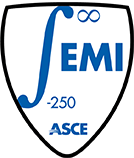Where we are and where to go (mechanical and electrical properties of polymer composites)
Registration details
Thursday February 24, 2022 at 11:00 AM US Eastern Standard Time
Presented by Dr. Karl Schulte, Professor (Retired), Technische Universität Hamburg, Institute of Polymer Composites
Abstract
Composite materials have developed in the last 60 years from a just new material into a class of established engineering material with surprisingly outstanding properties. Best demonstrated as being the material of choice in the aerospace industry.
The idea of fibre reinforced composites was to develop a new class of structural material with the advantage of light weight combined with high strength, but accepting the “disadvantage” of being highly anisotropic. Consequently, the early research presented in the first ICCM, ACCM and ECCM conferences focused on the design and mechanics of composite materials. New production technologies had to be developed, which remain to be a subject of high importance. A new understanding on damage and failure was developed together with novel nondestructive evaluation techniques. Materials science is and has been necessary to overcome the misfit between the different classes of material (metal/ceramic; polymer/ceramic; bio based matrix/natural fibres etc.). Science on composite materials has matured into a real interdisciplinary research.
Advancements in materials science allow to control and tailor mechanical (structural) and physical (functional) properties of lightweight materials. On the example of reinforced polymer composites we discuss how carbon based fillers, as fibers and carbon allotropes, improve the mechanical and electrical properties of composite materials. This enables the design of lightweight composite structures with embedded functions, as heating or sensing capabilities to monitor deformation, load, damage or even identify gas. In this presentation we will discuss the improvements achieved based on technological advancements and its potential for future applications.
With the understanding of the complex interaction of the constituents new applications of composites will be possible which, on the other hand, deserves further and intensive research. In the presentation we will discuss what we have reached already in composites science and technology, where we still lack understanding and where and how our research can lead to new applications.


